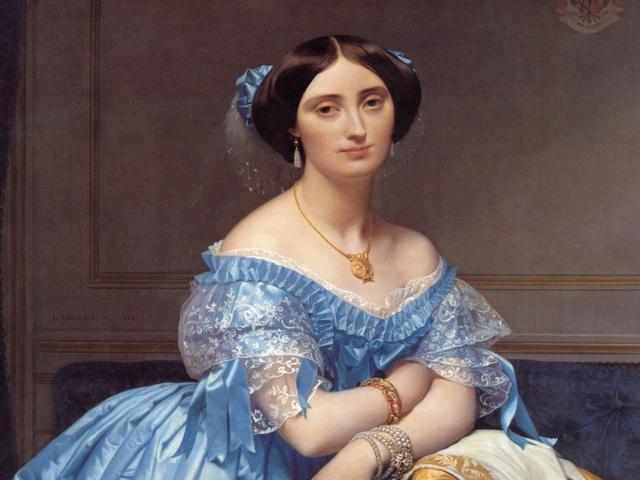The princess of broglie

Jean Auguste Dominique Ingres (August 29, 1780 – January 14, 1867) was a French neoclassical painter. Although he considered himself a painter of history in the tradition of Nicolas Poussin and Jacques-Louis David, towards the end of his life it was Ingres's portraits, both painted and drawn, that were recognized as his greatest legacy.
Ingres's death marked the symbolic end of the tradition of monumental history painting in France. By the mid-1860s, contemporary life, as shown in the work of realist artists, had usurped the exploits of the ancients as the dominant thematic concern of modern painting. Despite having been surrounded by a group of devoted fans, Ingres left no pupils to support his increasingly antiquated artistic vision.
The Princess de Broglie is one of the last characteristic portraits of his work. The face is immediately recognizable. The anatomy is believable, but in detail it is a little distorted: the arms and hands, for example, are so elegantly lacking in bone and muscle that they seem barely capable of holding a fan. The colors are unusual and the textures are lush. The depth behind the sitter is cut away, eliminating distractions, focusing our attention on the details of the pose, costume and accessories that reveal the character of this woman.
But Ingres was not only highly competent in faces and frou-frou. He was a highly trained artist with academic training. Below is one of her preparation sketches for this portrait, showing that she had considered exactly what the body wrapped in the hoop skirt was doing. The model was a professional, not the princess de Broglie; hence the lack of details on the face.
The portrait was commissioned by the model's husband, Albert de Broglie, a few years after their ill-fated marriage. Pauline was stricken with tuberculosis shortly after completing the exquisite portrait, leaving behind five children and a grieving husband. Throughout Albert's life, she was wrapped in the fabric of the walls of the family residence. The portrait remained in the de Broglie family until shortly before Robert Lehman acquired it.
© Tourblink